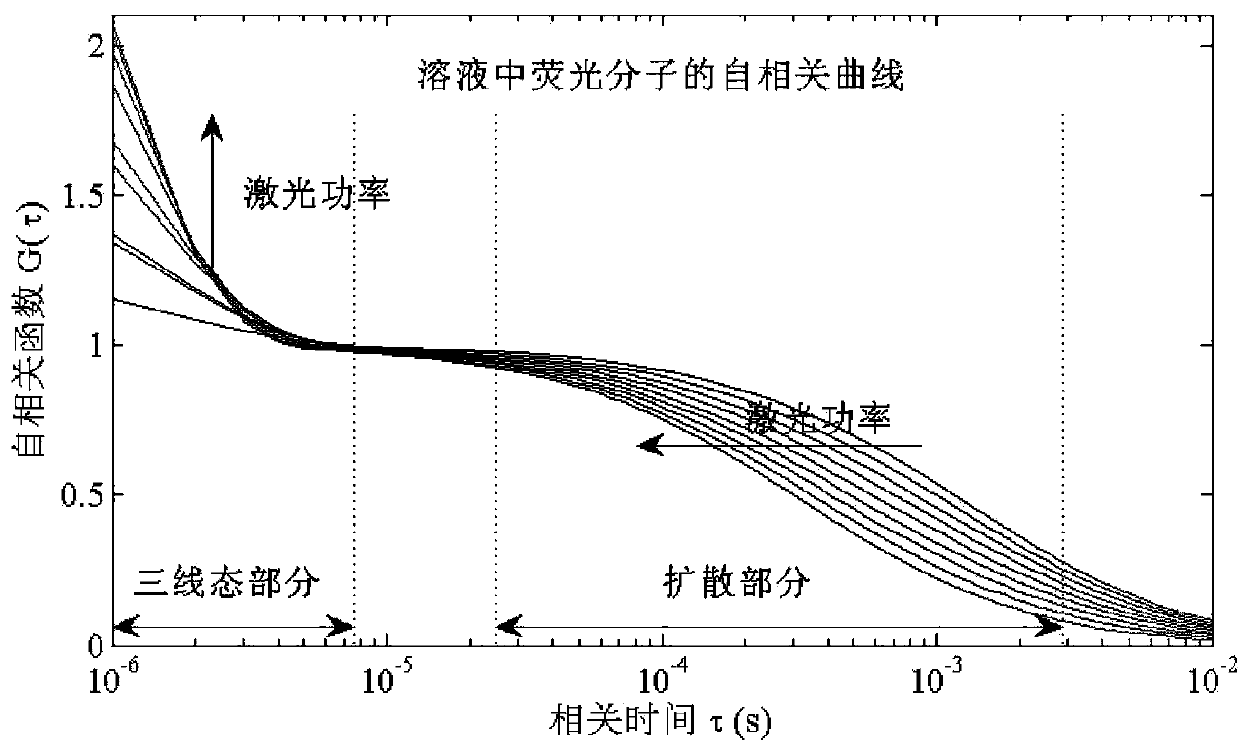Donor-acceptor distance distribution measuring method based on fluorescence correlation spectroscopy
A technology of fluorescence correlation spectrum and measurement method, which is applied in the field of measurement of fluorescence resonance energy transfer distance distribution, and can solve the problems of measurement, lack of technical effect, and inability to accurately calculate the influence of receptor concentration.
- Summary
- Abstract
- Description
- Claims
- Application Information
AI Technical Summary
Problems solved by technology
Method used
Image
Examples
Embodiment 1
[0112] Change the distance between the donor-acceptor pair ECFP-Venus to construct 3 independent fluorescence resonance energy transfer systems, 10%, 35%, 75%. The triplet weight distribution of each system shows a narrow peak distribution, such as image 3 shown in the curve. Use the maximum entropy algorithm to invert and calculate the triplet weight distribution of each system, as shown in image 3 is shown by the dotted solid line. The results of maximum entropy inversion show that the calculated results are in good agreement with the actual distribution in the single-distance FRET system.
Embodiment 2
[0114] The ideal result can also be obtained by using the same maximum entropy inversion to put three donor-acceptor pairs with different distances in the same system, such as image 3 The solid lines in represent the inversion results of the three donor-acceptor distances mixed in equal proportions.
[0115] In calculating the transfer rate constant k ET , implying the triplet relaxation time τ tri A to the transfer rate constant k ET There is a one-to-one functional relationship between them. Although the function cannot be expressed explicitly, the functional relationship can be expressed graphically, such as Figure 4a , Figure 4b shown.
[0116] transfer rate constant k ET The function between the distance r to the donor receptor is given by The energy transfer rate constant formula is given by:
[0117] k ET ( r ) = Q ...
PUM
 Login to View More
Login to View More Abstract
Description
Claims
Application Information
 Login to View More
Login to View More - R&D
- Intellectual Property
- Life Sciences
- Materials
- Tech Scout
- Unparalleled Data Quality
- Higher Quality Content
- 60% Fewer Hallucinations
Browse by: Latest US Patents, China's latest patents, Technical Efficacy Thesaurus, Application Domain, Technology Topic, Popular Technical Reports.
© 2025 PatSnap. All rights reserved.Legal|Privacy policy|Modern Slavery Act Transparency Statement|Sitemap|About US| Contact US: help@patsnap.com



